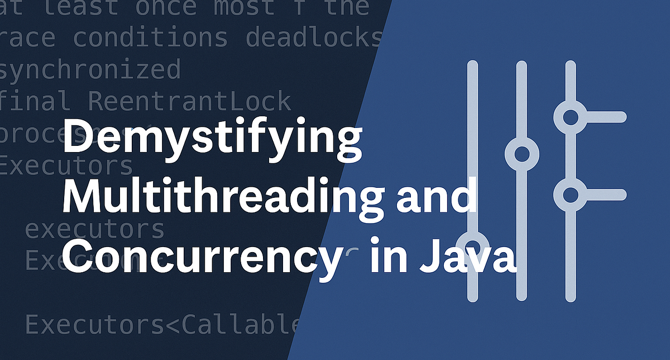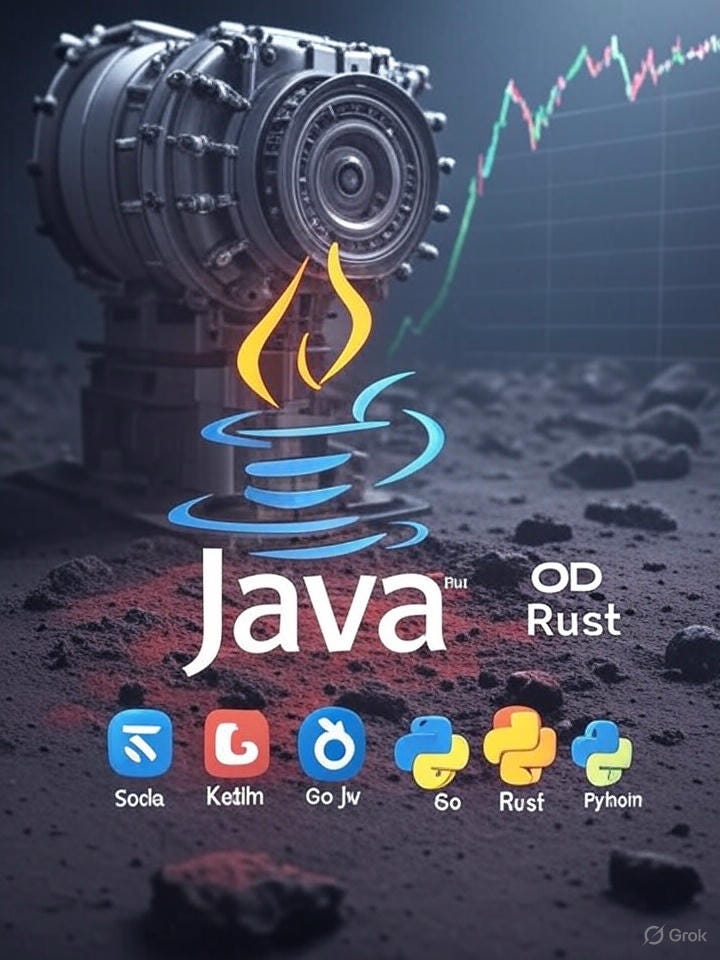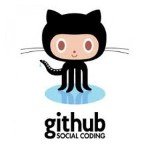Java
Medium
286
Image Credit: Medium
Sealed Classes in Java: Deep Dive with Interview Questions
- Sealed classes in Java provide explicit control over which classes can extend or implement a class/interface.
- They were introduced in Java 15 (preview) and finalized in Java 17, enforcing restricted inheritance and strong encapsulation.
- Sealed classes restrict which other classes or interfaces may extend or implement them, promoting controlled inheritance in the class hierarchy.
- For example, in a sealed class Shape, only Circle and Rectangle are allowed to extend it.
Read Full Article
17 Likes
Ubuntu Handbook
152

NetBeans 26 Added Java SE 25 Support for Tomcat, TomEE & GlassFish
- Apache NetBeans announced the release of version 26 after 3 months of development. The update includes better HiDPI support for UI elements and 150 icons have been updated to SVG format for improved display on HiDPI/Retina screens.
- NetBeans 26 has added support for Java SE 25 for Tomcat, TomEE, and GlassFish, which is expected to be released on September 16. Other additions include OpenJDK hotspot tests support, port forward command for Oracle Cloud Assets, Jakarta EE 11 and Swing GUI templates enhancements, and bug fixes.
- Furthermore, the release removed the inactive Security Manager since JDK 24, disabled by default in v25, and deprecated Integer constructor usage. Additional changes involve upgrading Gradle Tooling API, default settings for Micronaut applications, container query length units support for CSS, async generator methods, and various other enhancements.
- Users can download NetBeans 26 from Apache NetBeans official packages. Ubuntu users can install the snap package from App Center or download the native .deb package for installation.
Read Full Article
9 Likes
Medium
125

Image Credit: Medium
Demystifying Multithreading and Concurrency in Java: Concepts, Pitfalls, and Best Practices
- Java provides various abstractions for multithreading such as Thread, Executors, and CompletableFuture.
- Understanding the difference between creating threads, managing their lifecycles, and synchronization mechanisms is crucial.
- Shared mutable state is a root cause of most concurrency bugs, leading to inconsistent results in multithreaded environments.
- Best practices include using higher-level constructs, avoiding manual thread management, and being cautious with synchronization to prevent concurrency issues.
Read Full Article
7 Likes
Dev
201

Image Credit: Dev
History Java
- Java, originating from Sun Microsystems in the 1990s, was initially intended for interactive television but found success on the internet due to its portability and versatility.
- Developed by James Gosling and team, Java aimed to be simpler than C++, robust, secure, portable, and object-oriented, leading to the birth of the language 'Oak', later rebranded as Java in 1995.
- Java's bytecode, generated by the compiler from Java code, allows for the 'Write Once, Run Anywhere' capability by being interpreted by the Java Virtual Machine (JVM) specific to each operating system.
- The JVM simulates a computer within the actual computer, enabling the execution of Java programs on various platforms through bytecode interpretation or just-in-time compilation.
- Java's features include garbage collection for memory management, security measures to restrict code operations, and a vast standard library for common tasks, enhancing developer productivity and efficiency.
- The JVM-based compilation model has contributed to Java's widespread adoption in enterprise systems, mobile apps, and various devices, showcasing its enduring relevance in the tech industry.
- Java's evolution, marked by the transition from Oak to Java and the pivotal role of JVM and bytecode, exemplifies its remarkable journey from a niche programming language to a global powerhouse.
- The Java language's influence spans from critical financial systems to Android applications, underlining its significance in modern software development.
- Java's compilation to bytecode and subsequent interpretation on the JVM has been pivotal in its success, enabling it to run on billions of devices and maintain its prominence in the programming landscape.
- From its origins in reinventing interactive TV to its widespread use across diverse platforms, Java's legacy continues to shape the digital world, making it a fundamental language for developers worldwide.
Read Full Article
12 Likes
Discover more
Dev
156

Image Credit: Dev
🌍 Tourism Management System Project in Java – With Source Code
- The Tourism Management System Project in Java provides a real-world application with various features for students and developers to explore Java projects.
- It automates and streamlines travel or tourism business operations through modules such as customer information, tour packages, bookings, payments, and admin/user login system.
- Key features include user & admin login, tour package management, booking system, date & duration handling, and data storage using Java Swing, Core Java, and text file I/O.
- Recommended for students, Java learners, and startup demos, future enhancements can include connecting to a database, making it web-based, developing a mobile version, and adding a dashboard for analytics.
Read Full Article
9 Likes
Javarevisited
264

Image Credit: Javarevisited
21 Jenkins and CI/CD Interview Questions for Java Developers and DevOps (with Answers)
- Jenkins related interview questions are crucial for Java developers and DevOps engineers.
- Jenkins is a vital tool for automation in the Java world, necessary for build, test, and deploy pipelines.
- Having a good understanding of Jenkins and its plugins is essential for setting up pipelines, especially in green field projects.
- Whether junior or experienced, familiarity with Jenkins is important as it is widely used in companies and projects.
Read Full Article
15 Likes
Dev
40

Image Credit: Dev
From Zero to Cloud: Building Your First Java Web App on AWS with VS Code
- The project involves building a CI/CD pipeline by setting up an EC2 instance on AWS and editing a web app entirely in the cloud.
- Key steps include launching an EC2 instance, creating a key pair for authentication, enabling SSH access, installing VS Code, and connecting to the EC2 instance.
- Tools installed include Java and Apache Maven for building and managing Java-based web apps.
- The project also covered concepts like SSH, cloud-based development, Maven builds, and managing keys, taking approximately 2 hours to complete.
Read Full Article
2 Likes
Dev
425

Image Credit: Dev
Number Guessing Game in Java
- A simple number guessing game program in Java was created.
- The program generates a random number between 1 and 100 for the user to guess.
- The user has 10 attempts to guess the number, and based on their input, they are guided to guess higher or lower.
- If the user finds the number within the attempts, a success message is displayed; otherwise, the correct number is revealed.
Read Full Article
25 Likes
Dev
44

Image Credit: Dev
🏫 School Management System Project in Java (With Source Code)
- The School Management System Project in Java is a desktop-based application aimed at simplifying administrative tasks for schools using Java Swing and MySQL.
- Key features include student and teacher management, subject and class management, exam and results module, attendance tracking, and a secure login system.
- Ideal for computer science students, beginners learning Java desktop application development, developers practicing CRUD operations with MySQL, and schools seeking digital management solutions.
- The project can be downloaded for free and offers potential improvements like SMS/email notifications, student login feature, PDF export for reports, and UI/UX enhancements.
Read Full Article
2 Likes
Dev
103

Image Credit: Dev
📚 Library Management System Project in Java (With Source Code)
- Library Management System Project in Java is a desktop application designed for managing library tasks efficiently.
- It includes features like book and user management, issue/return processes, admin capabilities, and a login system.
- Developed using Java Swing and MySQL, the project offers CRUD operations, login authentication, JDBC database connectivity, and GUI event handling.
- Ideal for computer science students, Java learners, and educational institutions, the project provides a valuable learning experience and practical application in library management.
Read Full Article
6 Likes
Medium
3k

Image Credit: Medium
Java Is Dying? Here’s Why It’s Still My #1 Choice in 2025
- Java continues to remain widely used and popular despite perceptions of decline.
- Java's stability and performance in various software development scenarios are highlighted as reasons for its enduring relevance.
- Java is praised for its modern features that make it competitive with languages like Kotlin and Python, while still maintaining its reliability.
- Java's economic value is emphasized, with top engineers commanding high salaries globally, indicating that Java is not just surviving but thriving.
Read Full Article
19 Likes
Dev
107

Image Credit: Dev
Working with Private Members and Method Invocation in Java Reflection
- Reflection in Java allows accessing private members, methods, and arrays at runtime, providing the ability to manipulate hidden or restricted elements.
- Private fields are mainly for encapsulation and safety, as final fields ensure values remain constant and prevent accidental changes.
- Deep reflection involves breaking into non-public elements using setAccessible(), allowing access to any element regardless of its visibility.
- Deep reflection is commonly used for accessing private fields like changing values in a Person class, albeit caution is advised for final fields.
- Reflection checks permissions every time a method is invoked, leading to performance overhead, and exception handling adds runtime cost.
- MethodHandles.lookup() provides a more performant and flexible way to invoke methods and constructors compared to traditional reflection.
- MethodHandle offers advantages like no parameter boxing, direct exception throwing, reduced access checks, and return type matching.
- By using MethodHandles, developers can achieve more efficient method calls, especially for primitives, and have finer-grained access control.
- Overall, deep reflection and MethodHandles provide powerful tools for dynamic manipulation and invocation in Java, enhancing flexibility and performance.
Read Full Article
6 Likes
Javacodegeeks
49

Image Credit: Javacodegeeks
GitHub Access with Java
- The GitHub API allows developers to interact with GitHub services programmatically.
- The github-api Java client library enables developers to connect to GitHub and manage repositories, pull requests, etc.
- GitHub is a popular platform for hosting software projects using Git, offering features like pull requests and issues.
- The GitHub REST API supports various use cases such as automating repository creation and integrating with external applications.
- The article provides code examples demonstrating how to use the GitHub API in Java applications.
- Dependencies like the github-api library are added via Maven in the pom.xml file.
- The Java code showcases functions for interacting with GitHub, such as listing repositories, creating new ones, and fetching details.
- It is crucial to securely store GitHub personal access tokens and avoid hardcoding them in source code.
- The class GitHubManager provides methods for operations like printing user info, listing repositories, creating repositories, etc.
- The article concludes by highlighting the versatility of the github-api library for Java development with GitHub.
Read Full Article
2 Likes
Javacodegeeks
350

Image Credit: Javacodegeeks
How to Use Java 21’s Virtual Threads in Real-World Web Applications
- Java 21 introduces stable and production-ready virtual threads as part of Project Loom.
- Virtual threads provide a lightweight, scalable alternative to traditional threads, managed by the JVM.
- For Spring Boot developers on version 3.2+, virtual threads offer enhanced performance for I/O-bound web applications.
- Integration of virtual threads in Spring Boot involves configuration and utilizing the updated TaskExecutor API.
- Real-world examples show how virtual threads can improve scalability for tasks like querying remote services for data.
- Benchmark comparisons demonstrate lower latency and memory footprint with virtual threads compared to traditional threads.
- Best practices include avoiding CPU-bound work in virtual threads and using structured concurrency for managing task hierarchies.
- Challenges such as library compatibility and monitoring tools not fully supporting virtual threads should be considered.
- Virtual threads in Java 21 offer a blend of synchronous code simplicity and asynchronous model scalability for developers.
- Using virtual threads, developers can simplify codebases, handle high concurrency, and improve scalability in web applications.
Read Full Article
21 Likes
Dev
260

Image Credit: Dev
Learn Java Programming Language with Practical Projects
- Java programming language is widely used and versatile, making it essential to learn through practical projects.
- The 'Write Once, Run Anywhere' feature of Java allows programs to run on any device with JVM, enhancing career opportunities.
- Practical projects bridge theory and practice, helping in applying concepts and preparing for real-world scenarios.
- Core concepts like variables, data types, control structures are crucial to grasp before starting project-based learning in Java.
- Sample practical projects for learning Java include beginner projects like Calculator App, intermediate projects like Library Management System, and advanced projects like Chat Application.
- Engaging in practical projects enhances understanding of Java concepts, problem-solving skills, and debugging abilities.
- Utilize online Java tutorials and resources alongside project work to reinforce learning and gain a comprehensive understanding.
- Learning Java with projects improves problem-solving skills, develops portfolios, enhances job prospects, and boosts confidence in coding.
- Integrating theory with practical projects is the most effective way to master Java and excel in various programming challenges.
- By starting small and progressing gradually, individuals can become proficient Java developers, opening doors to diverse career opportunities.
Read Full Article
15 Likes
For uninterrupted reading, download the app